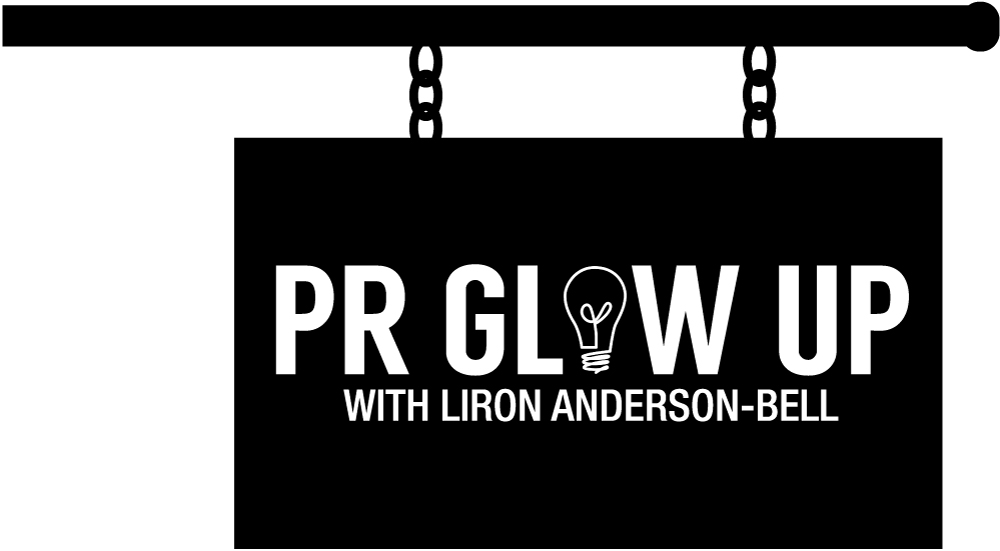The Secret to On-Target Media Pitching
/As a PR practitioner – solo or otherwise – one of your responsibilities is to land media exposure for your clients and the products, brands, and projects you represent. Strong placements that positively showcase and essentially cosign your clients’ brands are sacrosanct.
One way to accomplish this part of your job is to pitch story ideas to reporters, editors, producers, journalists, bloggers, freelancers, and other people who create media content for the public. Email is the current default means of communication, although depending on your relationship with the media contact, you may meet in person, reach out via social media, or use the phone.
The transaction itself is straightforward; you approach your media contact with a brief and compelling brand story or concept. The point is to get that person interested enough in the product or person or project that you’re representing to do a story (or segment, or feature, etc.).
Assuming the conditions are right — that your media contact needs/wants the content you’ve pitched — that person will get back to you with an affirmative response and the two of you will discuss how to move forward. The pitch-to-placement timeframe varies, but this is the basic framework.
That’s the ideal scenario. The only thing missing is “and they all lived happily ever after.”
Enter foolishness and mayhem
Unfortunately, the pitch often does not go as described above. The roadblock to happily ever after is a persistent and contagious affliction particular to PR folks called off-topic pitching. It usually manifests in the form of Senseless, Horrendous, Irrelevant, Terrible Emails – or “S.H.I.T.E.”
S.H.I.T.E. is a massively awful, rude thing. S.H.I.T.E. is the reason for the Bad Pitch Blog and for The Hodges Partnership's hilarious #PRFail video. S.H.I.T.E. is the reason that your PRSA chapter holds at least one panel discussion every year with local journalists telling an audience of allegedly professional strategic communicators that it’s not OK to pitch a story about microprocessors to a reporter who covers sports.
Sidenote: That example sounds ridiculous, but I promise you, there is a PR person out there crafting some such S.H.I.T.E. pitch right now. Worse, another PR pro is about to pitch a microprocessor story to a writer at a magazine that does in fact cover the tech space, but will send the pitch to someone who typically writes about wearables (not microprocessors). Yet a third PR practitioner has just emailed his pitch to the right person at that same publication but there is absolutely nothing newsworthy about his client’s microprocessor product – so ultimately the pitch was of zero value to the reporter. Lo, the email was deleted.
Sidenote of the sidenote: Don’t fool yourself into thinking those latter two S.H.I.T.E. pitch scenarios are any less ridiculous than the first one (with the microprocessor pitch to a sports reporter). They are all colossal #PRFails.
The reality is that reporters and other media contacts really do want content that’s relevant to their area(s) of interest and expertise, but they’re busy, just like the rest of us. They’re on deadlines and they receive a tremendous number of pitches. When their inboxes are full of S.H.I.T.E., it’s that much harder to sift through it all and identify the pitches they actually want.
There are certainly innocent off-target pitches. Take someone who’s not a trained PR specialist, and has volunteered to get media coverage for an event being thrown by a local community group. This person really doesn’t know any better than to send a press release to the first 10 people listed on the town newspaper’s masthead. (Might be unfair to call this S.H.I.T.E., but it’s still off-target.)
However, more often than not, S.H.I.T.E. happens because of the way more intentional “spray and pray” method, where a PR practitioner pulls together a massive list of reporters in a broad category — dozens or more — and emails all of them the same pitch with a generic subject line, desperately hoping that one or two people on the list are a good fit (and then slogs through the list making annoying follow up calls and emails to reporters who are potentially not right for the pitch to begin with – which I talked about extensively in this post.
The worst part is that some of the major offenders are PR agencies – which have both the resources and the incentive to get this right, but put such pressure on account teams to get placements that they resort to sloppy methods like this to try to cover more ground quickly.
Over my 20+ years in this industry I have interacted with countless people at media outlets and it has been my experience that they generally delete or ignore anything that’s not relevant to their beat or area of expertise. When that happens, you don’t get the coveted placement. Obvs.
It seems clear that off-target pitches are a frustrating waste of time for everyone involved - so, why is this even happening?
Vetting gets short shrift
Earlier in this post I referred to vetting, but I didn’t call it that by name. Vetting is the heart of pitching on target and it means ensuring, before you pitch, that the person you’re reaching out to is the right recipient for what you’re promoting.
The plain truth is that S.H.I.T.E. is still a thing because PR folks habitually fail to vet their media lists – which is a tremendous disconnect, given these facts:
FACT #1: PR practitioners want to get media placements for their clients.
FACT #2: Writers and reporters want to publish compelling stories for their readers.
FACT #3: TV and radio producers want to broadcast great news segments for their viewers.
FACT #4: Bloggers and vloggers and podcasters want to share the latest developments in their niche with their audiences.
Like pitching, vetting isn’t inherently complicated. It breaks down to identifying likely media targets (both outlets and staff), doing the research to make sure your targets are correct, and crafting a solid pitch.
That first step (identifying likely media targets) means, essentially, pulling together a media list – and that’s just your starting point, not the end game. This step is the bare minimum in terms of effort because no matter how much you paid for your media list builder, or how many hours you spent online looking up names, or how many people at your agency have successfully used a particular list, or how many times you’ve seen a specific writer request sources on HARO, you still need to be completely sure that the people on your list are still the ideal recipients for your pitch.
Why?
There are thousands of media outlets and journalists and creators out there. Thousands. In fact, there are hundreds of them alone on certain beats or in categories like finance, entertainment, lifestyle or education. Within those beats, you have sub-categories like personal finance, television, weddings, or higher education.
By contrast, some media outlets may not have niche reporting at all. A small public radio station may just have one Arts & Culture reporter who covers gallery openings, museum exhibitions, and the latest independent film openings, but that person may not have the time to cover literature or the current season of the local ballet company. Details like this are important to know as well.
In addition, reporters relocate. They change beats. They retire. They take hiatuses to write books. They are promoted to senior roles within the same organization, which may mean they have the same email address but perhaps don’t produce stories anymore.
Put together, all of this means that you can’t just fling out your pitch to your bountiful cornucopia of media contacts. You have to drill down to the ones that are the best fit for your pitch, which brings us to the second step – doing the research to make sure your targets are correct.
How do you do that?
Read, watch, or listen to their work. There are no shortcuts with this, unless you already have good working relationships with literally all the people on your list.
You have to put in the time to understand what they cover today — not what they wrote about three years ago – and tweak your media list accordingly.
Using the earlier example of the small public radio station with one Arts & Culture reporter, it may initially seem logical to include that reporter on your list if you’re, say, promoting a new novel based in their city. However, once you review several months of that reporter’s work and see that there are zero books covered, you’ll realize that this target shouldn’t be on your list at all.
Finally, make sure that you’ve crafted a solid pitch. This is where many, many PR people are undone, but that doesn’t have to be your fate. Put yourself in the recipient’s shoes and be both intentional and smart about your pitch:
- Make sure your subject line (in the case of email) is direct and clear.
- Convey significant information early, in plain language, and be as succinct as you can without being terse.
- Even if your subject matter is light, don’t waste space and time being exceedingly witty. Humor and satire are subjective.
- If your pitch concerns technical or complicated subjects, even for the category you’re pitching, provide explanation without being too prescriptive.
- When your pitch includes a call to action, make sure it’s obvious and reasonable.
- Don’t pitch a story as a follow-on to a current event or breaking news unless there’s a direct and plausible connection between the news and your subject matter. I don’t know why so many PR people try this, because it’s nearly always a stretch and really insults the pitch recipients’ intelligence.
- From a housekeeping standpoint, spellcheck your work and read it several times to make sure that grammar and flow are solid.
Wherever you practice PR – a solo shop, in-house, at an agency, etc. – put in the work to get good at pitching. I can’t overstate the importance of this foundational part of being a successful PR practitioner.
Inspiration & Resources
This time around, I’m giving you homework. Both of the blog posts below provide useful and detailed tips and advice that will improve the quality of your pitches immediately!
- “A Checklist to Use for All of Your Email PR Pitches,” from prnewsonline.com’s Steve Goldstein, which excerpts a set of questions that PR pros should consider before sending email pitches. The questions were developed by Ken O'Quinn, a professional writing coach and founder of Writing With Clarity.
- “What I Learned from Receiving 3,751 PR Pitches” from one of my favorite digital marketing experts, Sujan Patel. Mr. Patel is not a journalist but as a founder, entrepreneur and major digital influencer, he receives lots of pitches and has some quality advice about what works and what doesn't.








